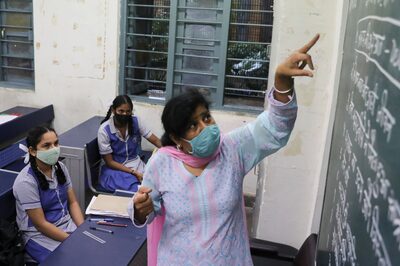
views
In about the same time Sister Teresa - then a 36-year-old Albanian nun and a headmistress of the Loreto Convent School in Entally in Kolkata - experienced what she later described as a "call within the call" to leave her convent and serve the poor by living among them, the world outside was crumbling down like a pack of cards. The year was 1946 and Bengal was reeling under crisis.
The great famine of 1943 had claimed more than 3 million lives in the then Bengal province alone. Starvation, malnutrition and disease was rampant among the so-called natives and frantic calls for phyan dao or wails for a cup of rice gruel still rent the air of this metropolis of hunger.
Then politics took over. A week-long communal riot, the biggest in British India, broke out in August, 1946, on account of differences between the Muslim League and Congress for partition of independent India. More than 4,000 people were killed and over a lakh were rendered homeless in the city alone. According to available accounts, it was difficult to avoid the stench of burnt flesh and rotting corpses all over the streets of Calcutta.
And in October 1950, when Teresa received Vatican's permission to start the diocesan congregation that would later become the Missionaries of Charity, Bengal had already started to experience the fall-out of Partition that came hand in hand with Independence. From 1947 up to the Bangladesh Liberation War of 1971, West Bengal accommodated a staggering 15 million refugees and immigrants from adjacent East Pakistan. These hapless, homeless, and often penniless, people disembarked from trains at Sealdah Station, inside a couple of kilometres from where Mother Teresa lived and worked. They arrived in trains and spread across the city while mostly ending up in colony slums or, worse, pavements.
It is no accident perhaps that Mother chose Kalighat as the place to start her first home for the dying in an abandoned temple two years later in 1952. The place hosts one of the most revered Hindu deities in the city, and that’s where the people at the receiving end of the above man-made calamities, irrespective of their faith, flocked to for shelter, compassion and hope to die with dignity that was robbed of them when they lived. Mother renamed her home Nirmal Hriday or Home of the Pure Heart because she believed that “people who lived like animals deserved to die like angels, loved and wanted”. Those who were brought home received medical attention from a Catholic nun who had started a congregation with just 13 members and was armed with a basic medical training from Patna’s Holy Family Hospital. But in that gesture, it seems, there was a silent resolve to spread the word for the need to show compassion in a city which was passing through tumultuous times.
In the four-and-a-half decades that followed, Mother Teresa’s work had grown to more than 4,000 sisters running orphanages, AIDS hospices and charity centres worldwide. And inside a decade of her death, nearly 5,500 sisters and brothers of Missionaries of Charity operated 600 missions, schools and shelters in 120 countries. But the seed of that global outreach germinated in the historical backyard of a city which was among the worst sufferers of the birth pangs of Independence.
Perhaps that’s why at the time of her canonisation as Saint, there are those in Kolkata who believe that Mother Teresa’s response to the world outside was only as a human - or to the lack of humanity on the streets and bylanes of this city. Sceptics have questioned her modus operendi, and her close aides have confirmed that even she had had her moments of doubts. But historically speaking, there seems to be no miracle in Mother Teresa’s arrival in a city which was struggling in its fight with colonial legacy for a new and independent identity.




















Comments
0 comment